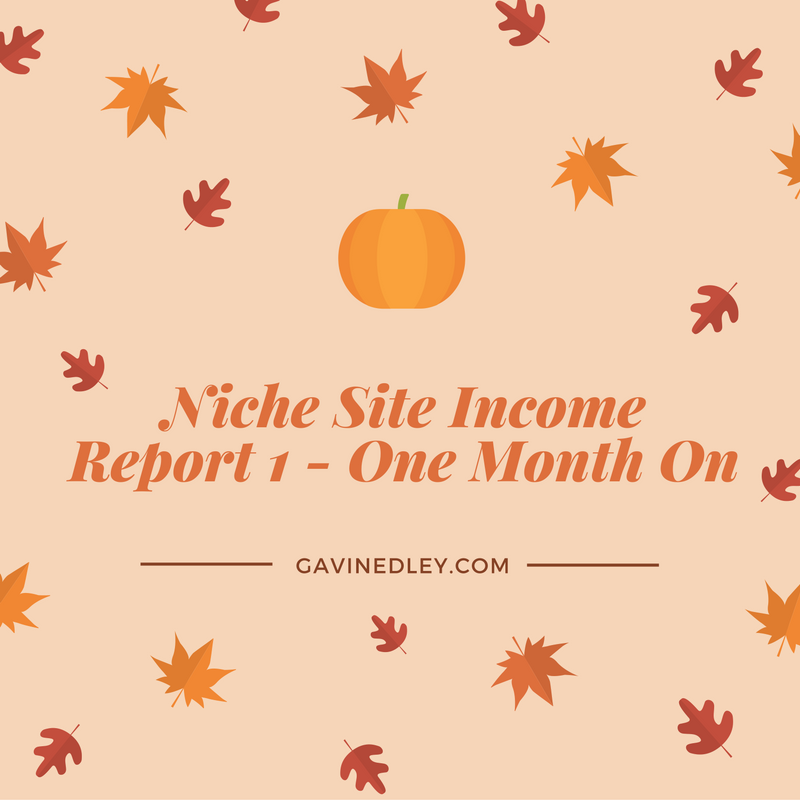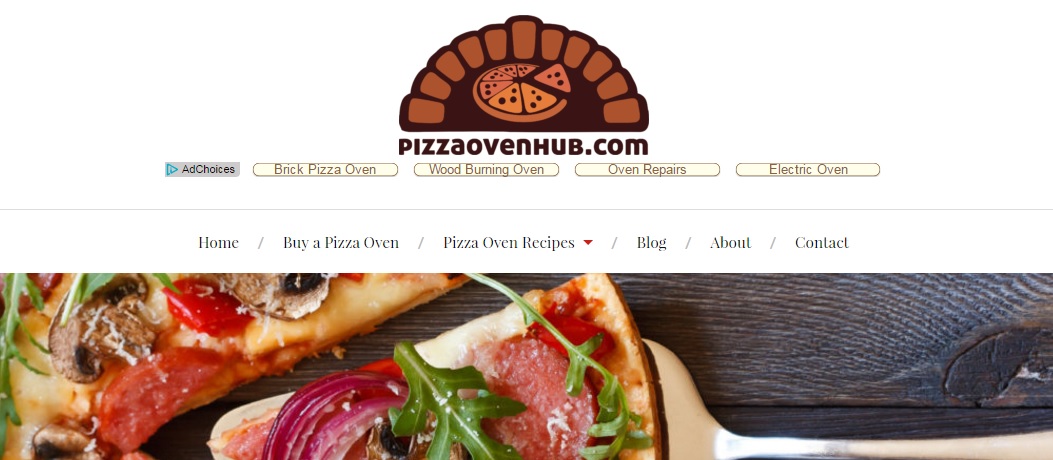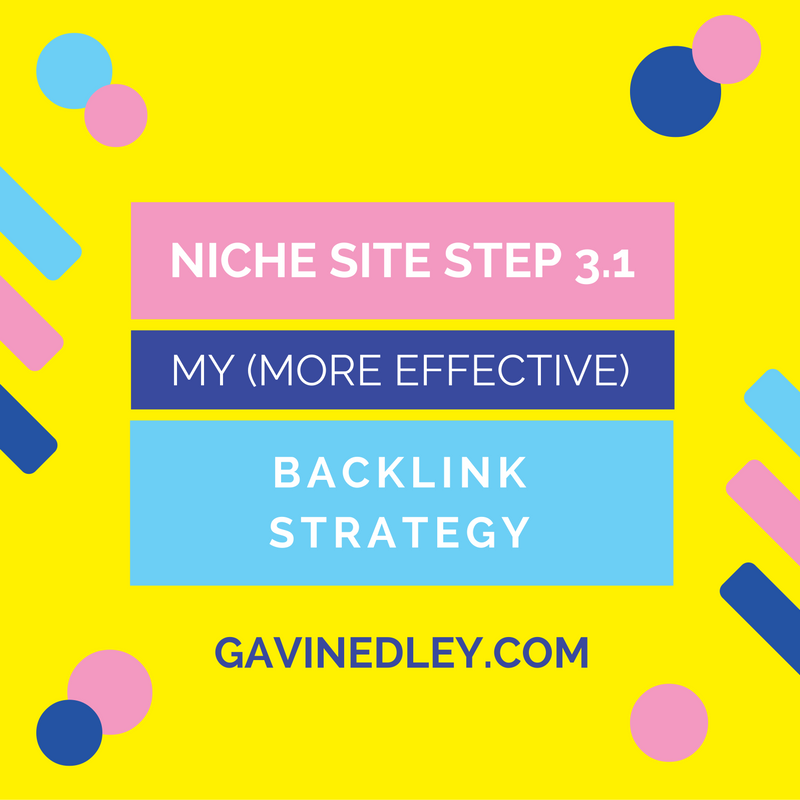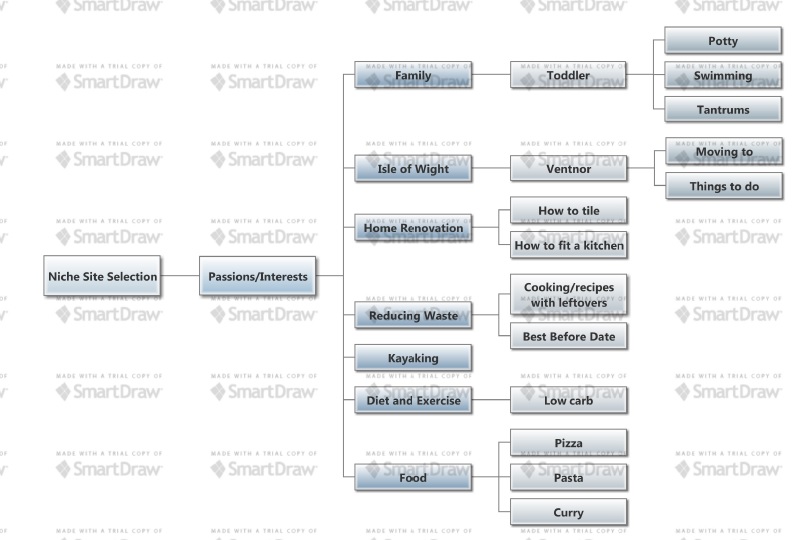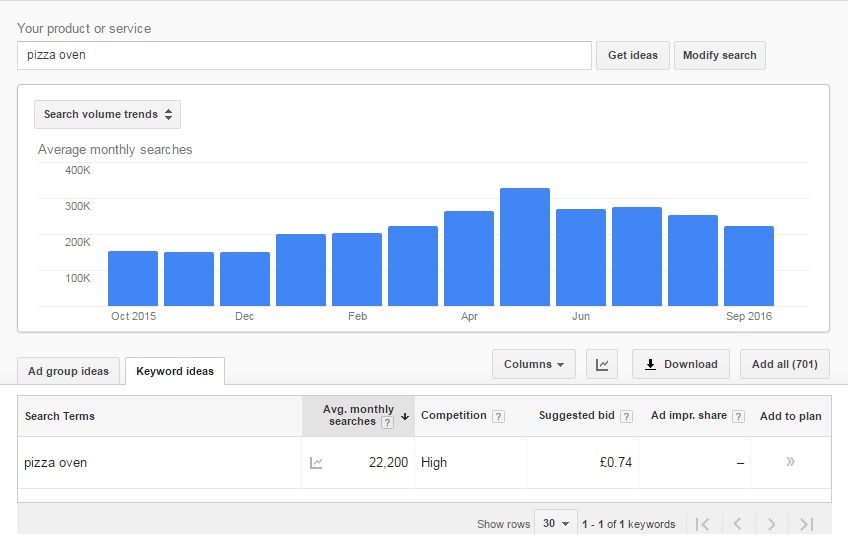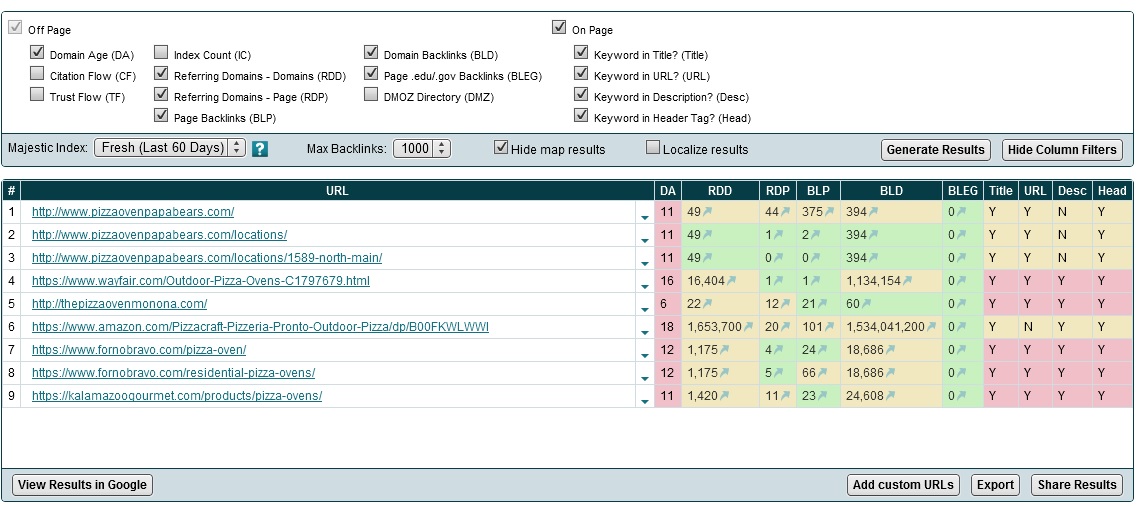So, it’s been all of 1 week since I posted my backlink strategy for my niche site pizzaovenhub.com and . . . sorry guys, I’ve changed it all up already.
Sorry to rock the boat!
I’ve never professed to be an expert in this field, and that’s what this journey is all about – learning what works and what doesn’t, so I can teach my readers, and be the crash-test dummy of backlinking and SEO.
The broken link approach that I mentioned in my last post only seemed to work for social sharing, and quickly started to lose the initial momentum and conversion rate I mentioned in my previous post.
It also became fairly obvious, rather quickly, that well-ranked blogs and websites are wise to the templates high-profile bloggers like Neil Patel provide you with, and they are sick of them! So to get a link from the guys that matter – it’s going to take a lot more than good content and a template outreach email.
So I changed my strategy, and now I have something that works – and I’m already seeing the impact in rankings on derivative keywords from just one powerful backlink placed under this new strategy.
So, here it is . . .
My (Effective) Backlink Strategy
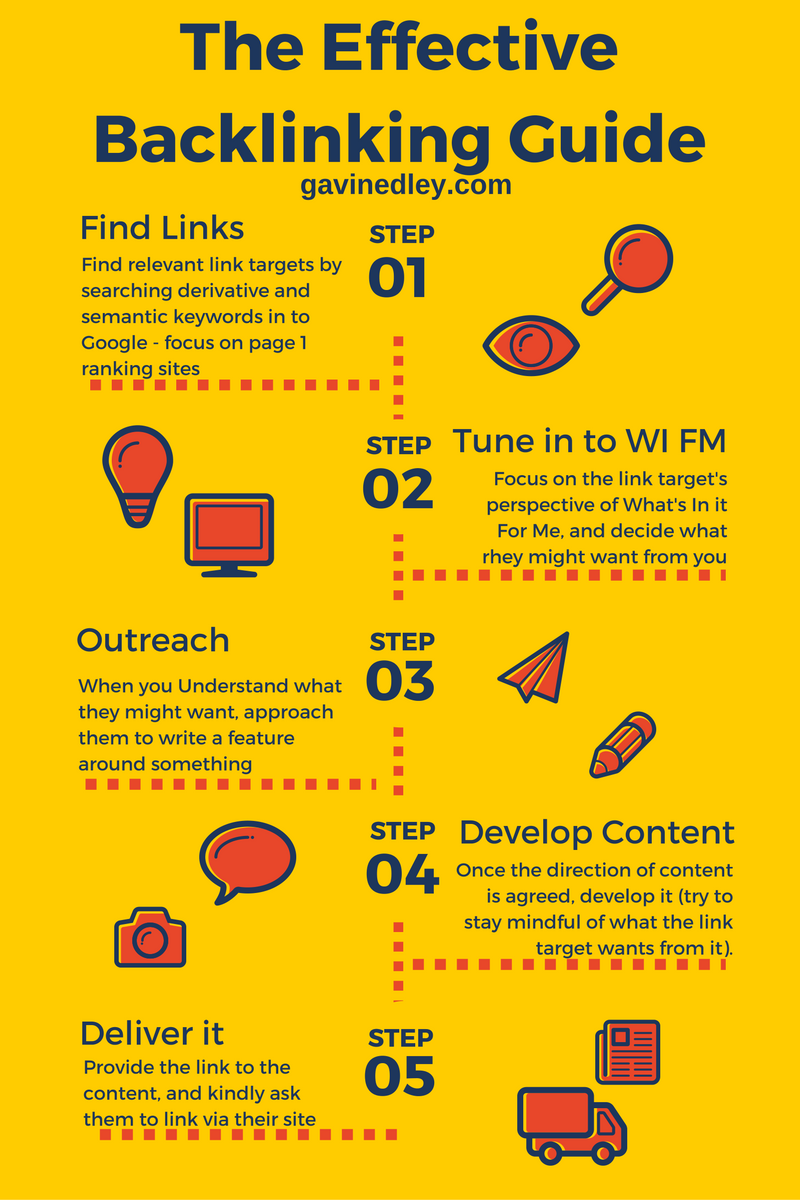
My effective backlink strategy ultimately comprises 4 parts (with a bit of thought in-between – hence the 5 steps above), just as my previous strategy did – except the approach is much different:
- Find relevant links
- Outreach, but in a different way (see below)
- Develop and post agreed content
- Get your link
So here’s the 4 steps in more detail:
1. Find Relevant Links
Forget resource pages and links pages this time – we’re delivering much more value to the link target than ‘useful information’ for their readers, so we don’t just need to hit the sites that actively link out on resource/links pages.
Plus, this new approach is going to get you high-quality contextual links (embedded within the link-target’s site content) – just the sort that Brian Dean from Backlinko says you should be aiming for.
To find my relevant links, I started with a brainstorm – I brainstormed all related keyword terms, derivative (including your primary phrase but not exclusively your primary phrase, so for me, things like ‘wood fired pizza oven training’ and so on) and semantic (not including your keyword phrase but linked to it in some way, so for me, things like ‘firewood’ and ‘outdoor cooking’) keywords.
Then, when you have a list of derivative and semantic keywords, do some Googling on these terms to see what sort of websites come up.
Now, before you jump into step 2 and contact them, you need to think about what sort of value you could add to their site and their business.
Tune in to WI FM (What’s In it For Me), from the website owner’s perspective. What can you deliver to them that helps them meet their business/website/blog’s objectives.
And I’m not talking vague things like ‘providing a valuable link to show their visitors’ – these website owners really don’t care about this. They’re either selling something, trying to raise their profile with potential customers, or communicating a particular message to their audience, or all three.
You need to therefore deliver something to them that will help them sell their products/services, raise their profile, or communicate their message.
And to do that effectively, you’re going to need to develop your content after you know who you’re trying to get a link from – so you can customise the content down to actually mentioning them in the piece.
This is where running other ecommerce businesses through my position at Vitalife Group came in useful – it gave me perspective of how I’d feel about bloggers contacting my companies for backlinks by using the broken link and ‘valuable content’ approach.
To be honest, I’d probably fix the link and not bother sharing the content – because I’m wise to the approach now, and I know their primary motivation for getting in-touch is not to help me by finding broken links, it’s to help themselves by getting a backlink from my site.
And the same applies to authoritative websites and blogs – they’ll receive tons of these emails, and they’ll be wise to your motivations for contacting them, so even before they’ve started reading the content of your email, the barriers are up.
So instead, once you’ve found a few ‘link targets’ by searching Google for your derivative and semantic keywords, you need to take the following approach . . .
2. Outreach, but in a Different Way
Don’t use templates for your outreach! Start every point of communication with link targets from scratch.
I know, I know. It’s laborious, and takes a lot of time.
BUT, if you are focusing on highly authoritative, relevant sites, attaining just one quality link like this can rocket you up the rankings (as I’ve already experienced this early on – but more on this later in the post) – so don’t worry about this process taking time.
Backlinking is about quality, not quantity.
Put all of your efforts into attaining each link you outreach for – it should never be a case of copy/paste, hit send and repeat. Do this, and you lose the whole impact of this highly-effective strategy.
So, start with your first link target, make sure they are ranking well for either a derivative or semantic keyword in your field, and think carefully about what they want.
I did this, and my first target was a pizza oven retailer.
They had an exclusive, slick-looking pizza oven for sale – and it was available only from them. This meant, if I wrote a feature about it, it would only ever benefit them in terms of the awareness it generates – which would deliver a high level of value to them.
So, I went ahead and dreamed-up a new concept of announcing our ‘Pizza Oven of the Month’ on the blog. It was the 1st November, so seemed the perfect time to start something like this.
I wrote a very flattering piece about the oven, covering its features, and what I ultimately thought of it and why it was November’s Pizza Oven of the Month (which was all actually truthful – by the end I did want one of them myself!).
I then contacted the website and told them about the review and the fact that one of their exclusive models had made our Pizza Oven of the Month award. To which they shared socially, and also placed a contextual link to my niche site on their HOME PAGE of all places!
That’s a 100% conversion rate right there. This was the first target I’d approached under this strategy, they were ranked highly for my primary keyword and other derivative keywords, and I’d just attained a juicy backlink from them on their most important page of all.
The impact of this link was immediately apparent, in a few days it made my site rank for lots of derivative keywords (although, strangely, it’s still not showing for my primary keyword ‘pizza oven’ – but a few more links like this and I’m sure it will).
From not ranking on anything other than ‘Pizza Oven Hub’ – which is ultimately my domain name, and noone ever uses this as a search term – to ranking at the following places for these words:
Buy Pizza Oven Online – Rank 44 Worldwide
Pizza Oven Recipes – Rank 127 Worldwide
Outdoor Pizza Oven Recipes – Rank 153 Worldwide
How do I know this?
I use a combination of my Google Webmaster account for my niche site, which tells you what search terms your site is showing for, then I run these search terms through SERPs.com’s Rank Checker Tool, to find the precise rank at any given time.
The above data is interesting, not just because I wasn’t ranking at all prior to this single backlink, but it’s also interesting that the best ranking keyword is related to buying pizza ovens online – which is the primary focus of the site providing the backlink, to sell Pizza Ovens online.
Although I have an Amazon affiliate store on my niche site and a ‘Buy Pizza Ovens Online’ page, this is certainly not where my textual content is focused – it’s more around the types of pizza oven available, and also quite a lot of keywords focused around building your own pizza oven. So it’s definitely not my on-site content that’s guided this ranking.
Now, as I said before, I’m no SEO expert – I’m just crash-testing theories – but perhaps this suggests that Google takes the relevance of sites that are backlinking to yours not only seriously, but it also guides your ranking in searches based on your backlinking site’s content (perhaps even more so than your own on-site content?).
Or perhaps it’s simply because competition is less fierce in this long-tail term? And I haven’t surfaced that well elsewhere because the other terms are more competitive?
I dunno.
I just found this a very interesting point.
I think, in truth, Google’s algorithm is probably so complex, with so many layers and variables, that even the boffins that built it and maintain it couldn’t explain specifically what single part of the algorithm leads, primarily, to ranking for a particular term.
I also heard they were using AI (Artificial Intelligence) to allow the algorithm to adapt to new search terms never used before and so on.
That’s all a little bit too complex for me – I’m just trying to get my little Pizza Oven niche site ranked well – and the common consensus, and my own data, show that quality, relevant backlinks are the general direction you need to head in to achieve this.
I digress . . .
Back to the strategy.
So, in my example I kind of did things backwards to what I prescribe in my 4 step guidance, I created the content prior to contacting the link target – but I thought in that particular instance (and probably in many others) it would add more credibility to build the content and publish before discussing it with the link target.
It’s more credible to say, ‘hey, I just featured your product on my blog and it won our Monthly award’, than to say, ‘hey, if you provide me a link on your site, I’ll say one of your products won our Monthly award’.
It all depends on your particular approach and the type of custom content you’re building – it’s a judgement call you have to make on every link target before you approach them. Is it more credible, and therefore more likely to get shared, if I build the content THEN share this with the target, or is it safer to contact them first and build a feature with their involvement/awareness of it, to better guarantee a link placement once published.
I’ve used both techniques, and both are proving to be effective.
3. Develop and Post Your Agreed Content
So, if you’ve approached your link target at this point, and they have agreed to link to your feature if you build something around their product/service – you’re now in a position to type out your content and give them something worth sharing.
When writing your actual content, remain mindful of what your link target wants from the piece (to sell more products/services, to raise awareness of something, etc) and ensure you get this across effectively, but also remember that the target will not want the piece to sound as though you are affiliated with them, as it then loses credibility for sharing amongst their readership and visitors, so try to keep it sounding independent and unbiased.
4. Get Your Link
When you’re happy with the content, it’s often a good idea, provided you have contacted your link target beforehand and they are aware of the feature being built, to get their input before publishing.
Ensure it meets their needs and get their stamp of approval before you send it live.
Then all you have to do from here is let them know it’s gone live, provide the link, and kindly ask that they link through to the piece from their website as agreed.
BINGO!
You’ve got your high-quality, relevant link.
Plus, you’ve just built yourself some relevant, unique, fresh content for your site at the same time – it’s a win-win.
The approach not only wins more backlinks at an incredible conversion rate, but it also commits you to continually developing new content for your site – which is often hard to keep up when you have other commitments beyond your niche site.
And that’s that!
Give it a go, and let me know what success rate you have with it by sharing your story in the comment section below.
Good luck! And remember, this is a time-consuming approach, but a very rewarding one.
I don’t know about you, but I’d rather spend an hour or two building custom content and pretty much guaranteeing a quality backlink than spend an hour or two sending template outreach emails to ‘hopefully’ get one or two responses and maybe a backlink from someone.
This is a high-quality, high-impact approach that works – it adds genuine value to your link prospect’s sites, and also to your own.
Let me know how things go.





